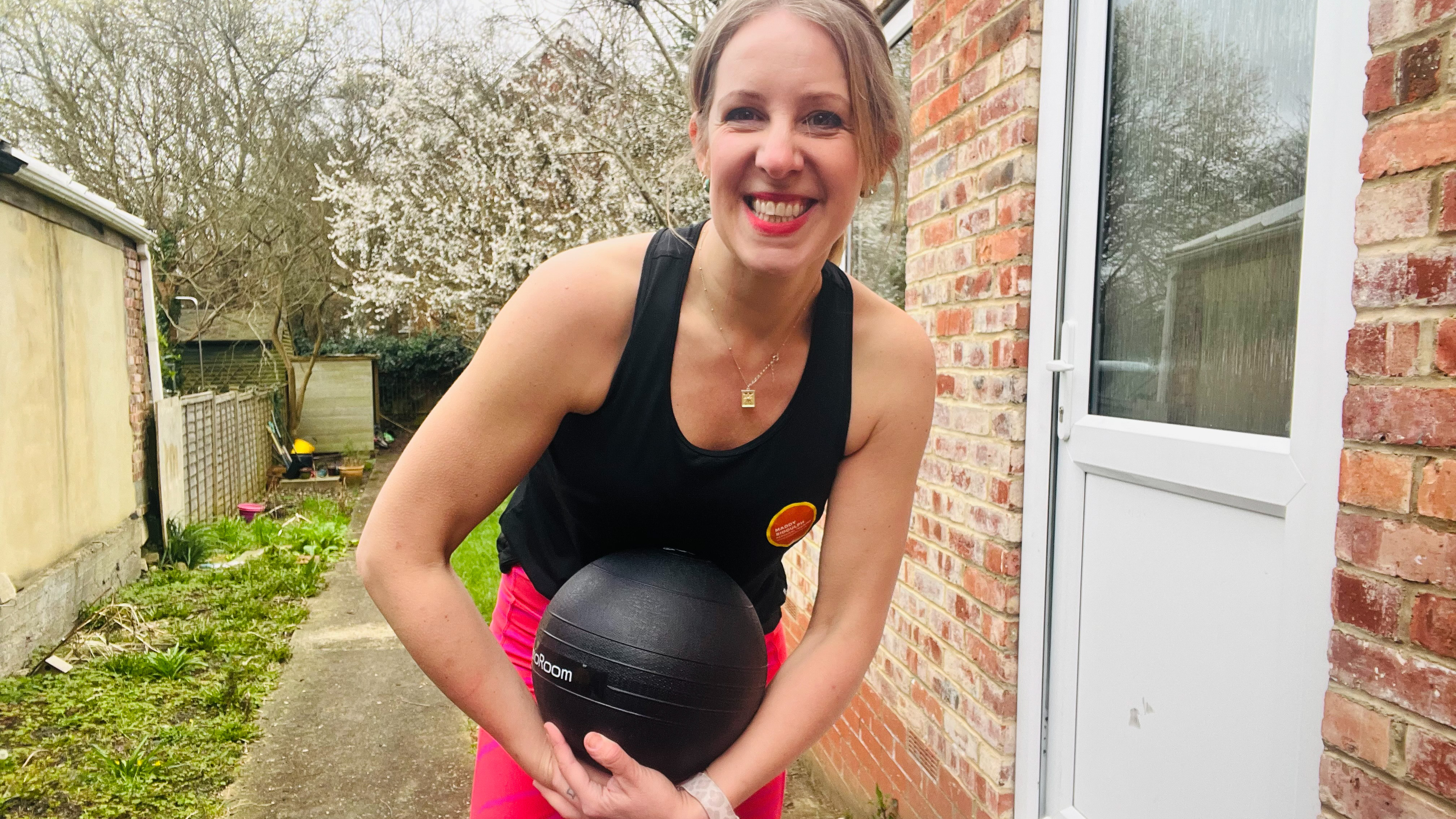What is a workout split?
Discover what is a workout split, how it differs from a full body session, and why it could benefit you


Questioning; what is a workout split? In the health and fitness world, there are so many different methods of training. For example, some people love nothing more than to sweat through an intense HIIT session for 30-minutes before aiding their recovery with one of the best protein powders for weight loss. While others might like to go for a run outside.
But if you’re looking to shake up your training, why not try a split workout? Unlike a total body session, a workout split refers to the process of splitting up your training across the week. And according to research, doing so can have beneficial impacts.
To unpack this and find out how to create a workout split, we turned to science and spoke to Chris Gagliardi, American Council on Exercise’s scientific education content manager and certified personal trainer, health coach, and group fitness instructor.

Chris Gagliardi is an ACE Certified Personal Trainer, Health Coach, Group Fitness Instructor, and Medical Exercise Specialist, NSCA Certified Strength and Conditioning Specialist, NBHWC certified NBC-HWC, and NASM Certified Personal Trainer who loves to share his enthusiasm for fitness with others and is committed to lifelong learning.
He holds a bachelor's degree in kinesiology from San Diego State University, a master’s degree in kinesiology from A.T. Still University, and a certificate in orthotics from Northwestern University Feinberg School of Medicine.
What is a workout split?
A workout split is a term typically used in relation to resistance training. Essentially, the phrase refers to the process of splitting up your training program so that different muscle groups are trained on different days.
Gagliardi says: “There are many ways to create a split routine and the key is to find a way to train all the major muscle groups within the number of days you have available to exercise.”
You could create a workout split by focusing on just one body part, region, or lift (like isolating either pushing or pulling exercises), or specific muscle groups, like your lower leg, upper leg, hips, core, back, arms, chest, and shoulders.

What are the benefits of using a workout split?
1. It can help you focus
As Gagliardi explains: “For example, you may train your arms, legs, chest, back all on different days and can dedicate all of your time and energy to a specific body part or muscle group on those training days.”
Get the Fit&Well Newsletter
Start your week with achievable workout ideas, health tips and wellbeing advice in your inbox.
And, according to research published in the Sports Science Journal, researchers found ‘strong evidence’ to suggest that resistance training frequency does not ‘significantly or meaningfully impact muscle hypertrophy when volume is equated’. They concluded: “Thus, for a given training volume, individuals can choose a weekly frequency per muscle group based on personal preference.”
2. It can help with recovery
Rest and recovery are important parts of any health and fitness journey. And when you follow a workout split program, it could allow enough time for sufficient recovery of different muscle groups.
Gagliardi tells us: “If you split your routine by upper and lower body workouts then you can workout on more days because your upper body can recover on the days when you are training your lower body.”
According to a study published in the International Journal of Exercise Science which compared the effect of 24, 36, 48, 72, and 96 hours of rest in men – 48 hours between sessions is the sweet spot to help you optimize your performance.
3. It can boost muscle strength and hypertrophy
In one 2021 journal, researchers compared the effects of split and full-body workout routines on muscle strength and hypertrophy and measured this across a 10-week period.
This saw researchers conclude: “Individuals in the split workout routine and the full-body workout routine groups experienced similar maximal strength gains from baseline to post-intervention.”
And, in some cases, individuals who completed split workout routines had minimal but slightly higher gains, especially when it came to bench press and squats.
4. You can enjoy higher volume and higher intensity
According to the findings of researchers in a 2022 trial, a split workout routine can help support a high volume of work per muscle group, while keeping session duration manageable.
Researchers said: “It is possible that a higher session frequency would lead to shorter and more intense sessions with less accumulated fatigue, ultimately resulting in more work performed.” However, as researchers highlighted: “Proper manipulation of load, volume, rest and frequency is essential to improve muscular hypertrophy and muscle strength.”
Becks is a freelance journalist and writer with more than 7 years of experience in the field. She writes health and lifestyle content for a range of titles including Live Science, Top Ten Reviews, Tom’s Guide, Stylist, The Independent, and more. She also ghostwrites for a number of Physiotherapists and Osteopaths.
Health has been a big part of Becks’ lifestyle since time began. When she’s not writing about the topic of health, she’s in the gym learning new compound exercises. And when she’s not in the gym, she’s most probably reading.
-
 This might be your last chance to get my favorite waterproof walking shoe, and it's 25% off
This might be your last chance to get my favorite waterproof walking shoe, and it's 25% offDeal These Adidas Gore-Tex shoes are the most watertight I've tested
By Lou Mudge
-
 I tried wall balls for 30 days and the results surprised me
I tried wall balls for 30 days and the results surprised meTry this fitness challenge to boost total body strength
By Maddy Biddulph
-
 Dumbbells on sale: muscle-building weights without breaking the bank
Dumbbells on sale: muscle-building weights without breaking the bankDeals Use these dumbbells on sale to pick up essential strength training weights at a discount
By Ruth Gaukrodger
-
 What are the benefits of squats?
What are the benefits of squats?FITNESS The wide-ranging benefits of squats will get you motivated for your next workout
By Bo Heamyan
-
 What are the muscles worked by rowing machines?
What are the muscles worked by rowing machines?FITNESS Discover what are the muscles worked by rowing machines, according to science and experts
By Louise Bond
-
 Peloton Tread review
Peloton Tread reviewReview Our Peloton Tread review puts the treadmill through its paces to see if it is worth the hype
By Maddy Biddulph
-
 Elliptical vs running: which exercise is more effective?
Elliptical vs running: which exercise is more effective?Versus We look at the pros and cons of the elliptical vs running, to help you decide which will be best for your cardio goals
By Maddy Biddulph
-
 Beginner strength training tips from Alice Liveing
Beginner strength training tips from Alice LiveingFITNESS Alice Liveing offers advice on reps, sets and moves for beginner strength training
By Vicki-Marie Cossar
-
 5 dumbbell chest exercises to try at home
5 dumbbell chest exercises to try at homeFITNESS Want to work on your pecs? Here are our 5 dumbbell chest exercises to try at home
By Patricia Carswell
-
 Weight lifting for back pain: how to safely exercise
Weight lifting for back pain: how to safely exerciseBeyond building muscle, why not try weight lifting for back pain? We ask the experts to find out the benefits
By Louise Bond